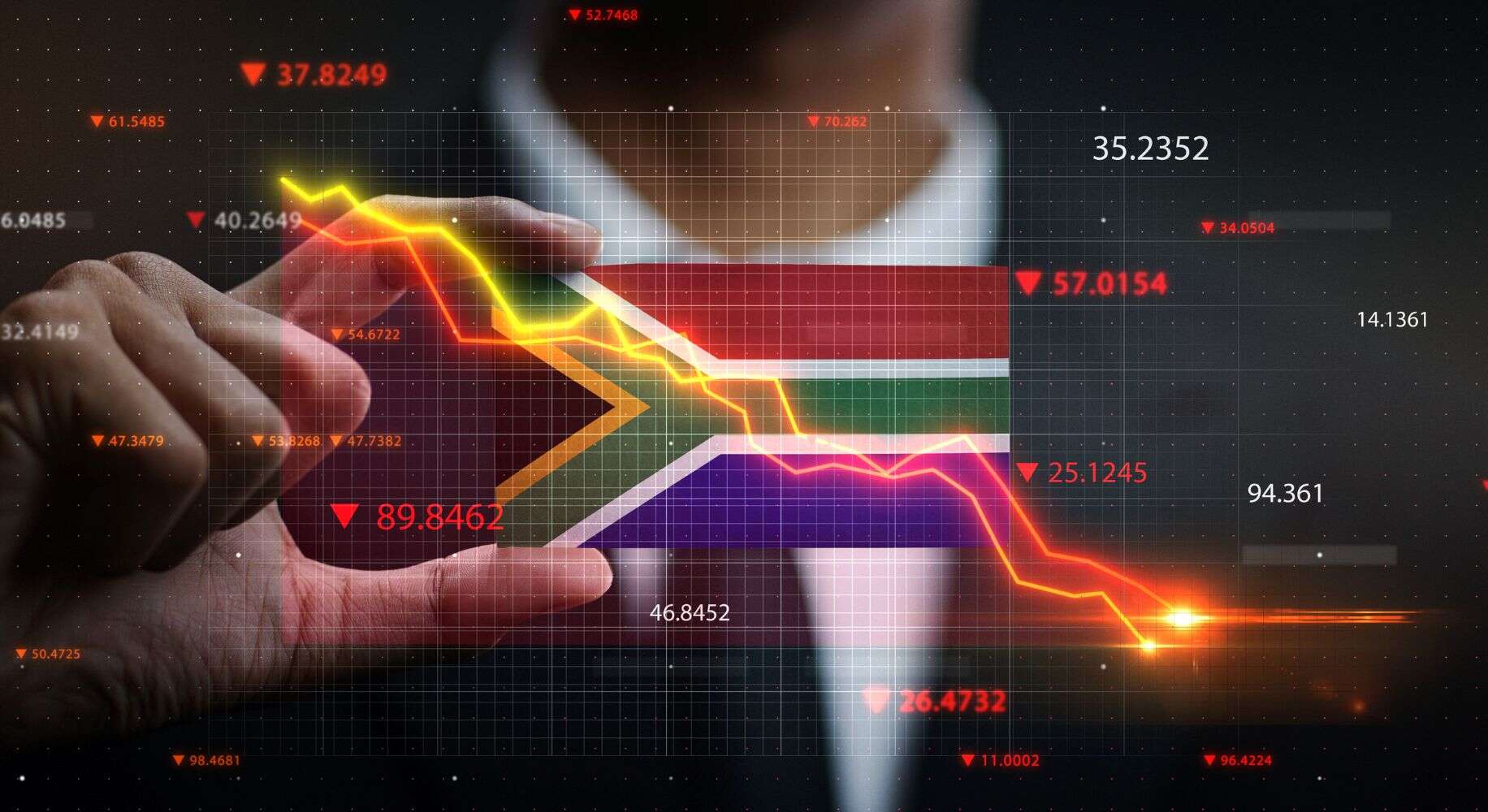We have been waiting for gold to break through $4 000/ounce for a while now and at last it happened this week.

While it was a quiet data week, gold took centre stage with a new record when it broke through $4 000/ounce this week. The rand also remained steady and was not too shaken by what goes on in the world.
Bianca Botes, director at Citadel Global said today that gold continues to surge, continually setting fresh record highs and refusing to lose momentum. “What began as a defensive trade has evolved into a global repricing of value.
“This week the metal reached levels above $4 000/ounce, driven by a combination of structural demand, waning confidence in the dollar and a shift in central-bank-reserve strategy. The rally spilled across markets, buoying commodity-linked currencies and helping the rand strengthen to its firmest levels since September 2024.”
Botes says there were three pillars behind the rally: monetary policy, central bank buying and geopolitical recalibration.
ALSO READ: US tariffs: expert says trade flows starting to realign to new markets
Monetary policy
Markets are positioned for a deeper US Federal Reserve (Fed) easing cycle after the 25-basis point cut on 17 September, which lowered the fund’s range to 4.00% to 4.25%, Botes says.
“Real yields have slipped, reducing the opportunity cost of holding gold. Investors now view bullion as an active allocation against policy uncertainty and fiscal imbalances rather than as a passive hedge.”
Central bank buying
Official-sector purchases remain robust, although they are below the extraordinary pace of 2023, Botes says.
According to the World Gold Council, net central bank additions reached 244 tonnes in the first quarter of 2025. Poland has led with 67 tonnes year-to-date, while the People’s Bank of China extended its accumulation streak to 11 consecutive months through September.
“The motivation goes beyond diversification. It signals a strategic retreat from dollar concentration and sanction exposure. Such sovereign buying provides a firm floor for speculative flows to build on.”
ALSO READ: World Bank says this is how South Africa can create more jobs
Geopolitical recalibration
Trade frictions, tariff disputes and regional conflicts shifted perceptions of safety. Botes points out that where investors once sought refuge in US Treasuries, they now question whether assets tied to US fiscal policy still qualify as risk-free. Gold’s neutrality elevated it from crisis hedge to long-term reserve component.
Botes says the rally is no longer purely defensive. “A weaker dollar amplified it. The US Dollar Index (DXY) fell roughly 11% in the first half of 2025, its steepest first-half decline in decades, before recovering partway. It remains about 3% to 4% lower year-on-year.
“As capital rotates out of dollar assets, a portion inevitably lands in gold. The same dynamic lifts commodity currencies and equity markets. This is not the panic-driven ‘fear trade’ of 2020. It reflects a structural realignment toward a multipolar reserve system.”
She explains that when central banks expand holdings, private investors interpret it as validation rather than speculation. “Exchange traded fund inflows and futures positions followed official demand, turning each dip into a buying opportunity. Momentum has become self-reinforcing; sustained until liquidity or policy narratives shift.”
ALSO READ: Groceries still more expensive than last year despite small decreases
Dollar and gold tailwind for the rand this week
The dollar and gold were the rand’s tailwind this week, she says. “The rand’s rally this week to around R17.07/$ mirrors these global shifts. Gold’s ascent boosted South Africa’s terms of trade, with Sars data showing total exports of R184.3 billion in July 2025 and the ‘Precious Stones and Metals’ category contributing roughly R35 billion, highlighting the sector’s resilience even with a stronger currency.”
Meanwhile, she says, offshore investors continue to favour South African bonds. “Long-dated South African government bonds still offer yields near 10%, standing out in a world of declining developed-market rates.
“With the Fed easing and the dollar softening, carry (where traders profit from taking advantage of the interest rate differential between different countries’ bond yields) has become king again, attracting yield-seeking flows rather than short-term speculation, a critical underpin for the rand.
“A supportive backdrop adds oxygen as global equities rally, volatility remains subdued and capital is diversified out of the dollar bloc. The rand benefits directly from that rotation. The softer DXY supports both gold and risk appetite for high-yielding emerging-market assets, creating a feedback loop of soft dollar, strong gold, firmer rand.”
Still, valuation boundaries are tightening, Botes warns. “Domestic structural issues, including sluggish growth, fiscal strain and infrastructure bottlenecks remain, even if temporarily overshadowed by stronger external flows.”
ALSO READ: Gold is the new anchor for SA’s mining sector
What comes next for gold and the rand?
Botes points out that gold’s rally remains underpinned by strong fundamentals, but momentum could moderate if the macroeconomic backdrop shifts. “Central bank demand continues to provide a steady base, while subdued real yields still support non-yielding assets.
“However, the pace of gains will likely hinge on how US monetary policy, fiscal conditions and global risk sentiment evolve over the coming months.”
For South Africa, the combination of firm commodity prices and supportive global liquidity has so far contributed to favourable external balances and rand resilience, Botes says. “Nonetheless, local constraints, including slow growth, fiscal pressures and infrastructure challenges, remain part of the local broader risk picture.
“South Africa’s outlook will depend on the interaction between these domestic realities and global capital flows rather than on any single driver.”
ALSO READ: Economists not excited by ANC’s 10-point economic action plan
Gold up over 50% since the beginning of the year
Tracey-Lee Solomon, economist at the Bureau for Economic Research (BER), was also impressed with gold breaching $4 000/ounce, up over 50% so far this year as investors and central banks seek safety. She also noted that the People’s Bank of China added to its holdings for an eleventh consecutive month, while platinum also rose 6% week-on-week, benefitting from the broader rush into precious metals.
She says the rand strengthened against major currencies, supported by improved risk sentiment toward South African assets, a lower 10-year bond yield and gains in financial stocks. The JSE ALSI rose by 2%, while global equities extended record highs.
ALSO READ: Agoa is over, time to find new markets, BLSA says
Gold rally thanks to US shutdown and political instability in Europe
Busisiwe Nkonki and Isaac Matshego, economists at the Nedbank Group Economic Unit say the past week’s surge takes gold’s gain up to an impressive 53.9% for the year to date. “The precious metal continued to rally on robust safe-haven demand, reinvigorated by the US federal government shutdown and political instability in Europe. Platinum reached a new high of $1 662.70 an ounce on Thursday, while silver also touched a record high of $55.05 an ounce on Thursday.”
Not to be outdone, the rand touched R17.14/$ on Thursday, its strongest level in 12 months, buoyed by the higher metal prices. Against the euro, the local unit firmed to R19.89, the highest level since the first week of April and R22.76 against the British pound, the highest since mid-February.
This morning, the local currency was trading at R17.19/$, ending the day at R17.28, while gold ended the day on $3 982.63/ounce.






